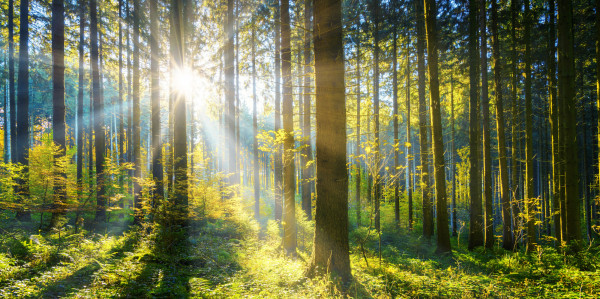The Importance of Forestry Biodiversity and Agri-environments in Ireland.

Forest biodiversity refers to all life forms found within forested areas and the ecological roles they perform. It not only includes the trees, but the plants, animals and micro-organisms that live within the plantation.
What can you do to improve your land and support our ecosystem?
Plant more trees! Plantations provide an environment for life to exist. It nurtures and protects species of animals and plants. These plantations not only increase and safeguard native Irish species but provide the potential for new products which can be highly profitable for use in pharmaceutical and food industries e.g., eucalyptus essential oils. The forestry sector is largely important to the Irish economy and rural development. Forests are not only established for wood production, soil, and water conservation, but they sequester carbon which is vital for the fight against climate change due to their capability to retain atmospheric carbon dioxide and lower greenhouse gases. Forests are being destroyed around the world and it is already having a detrimental impact on public health. Forests are natural air purifiers and help combat pollutants that we otherwise would be exposed to. Trees can provide relief for acute respiratory symptoms and asthma. Providing a cleaner atmosphere can lower the risk of airborne illnesses which is especially relevant in present times as we deal with COVID-19.
The Irish ecosystem is highly dependent on its environment, a forest can provide shelter and a habitat for a variety of species. Unfortunately, expanding grasslands has caused a decline in woodlands and shrubs, to target this problem, hedge cutting, and the clearance of vegetation has been restricted to the six-month period September to February as set out in Section 40 of the Wildlife Act 1976, amended by the Wildlife (Amendment) Act 2000 and the Heritage Act 2018. Educating our citizens on the importance of hedgerows and their significant contribution to Ireland’s ecological richness has resulted in an increased abundance of hedgerows inhabiting a diverse range of life.
There is more work to be done.
The positive impact that a plantation can bring to rural Ireland is significant. Now more than ever we need to increase the number of natural environments in Ireland. Increasing forested areas holds the potential to improve air and water quality and aid in the revival of Irelands native species populations. The ecological development in Ireland is a neglected matter which needs urgent attention. Increasing Ireland’s fauna and flora will not only improve the bionetwork but provide new and potentially money-making produce.
Agricultural land is the most abundant land type in Ireland and was disregarded as a safeguarding environment prior to now. Turning pastures into forested land will provide a new future for many species. These species have a role to play in our ecosystems, which we depend so heavily on. Forests are safe havens for wild mushrooms, dandelions, and animals such as the hedgehog, red fox, stoat, squirrels, and badgers. Biodiversity conservation and maintaining and improving Ireland’s ecological richness has been overlooked for many years leading to the decline in native flora and fauna. As a young person living in Ireland, I have experienced the depletion of many Irish species in my short lifetime, eagles, sparrowhawks, badgers, otters, bees and the list goes on. The planting of native trees will ensure a future for native Irish species and will generate income for future generations. Forestry can also provide millions of jobs worldwide.
Forest biodiversity can be better understood and utilised to our advantage. More research needs to be undertaken to understand the products that can be sustainably extracted from these forests. Irish forestry is underutilised and requires a more futuristic approach to ensure the livelihood of future generations and existence of native Irish species. Did you know that one large tree can supply a day’s supply of oxygen for four people? Imagine what a whole plantation could do!
Sarah Walsh, Environmental Science Student UCC